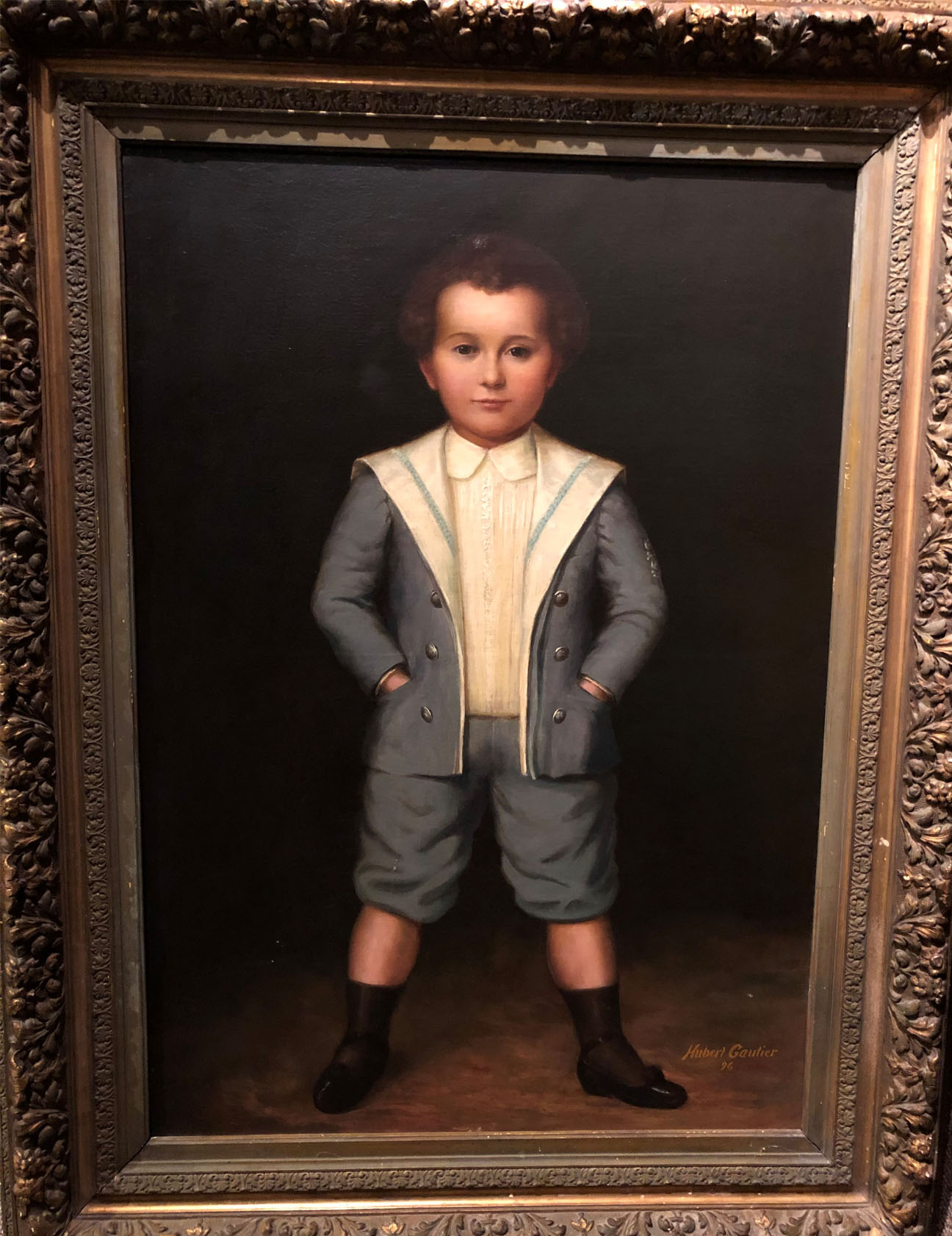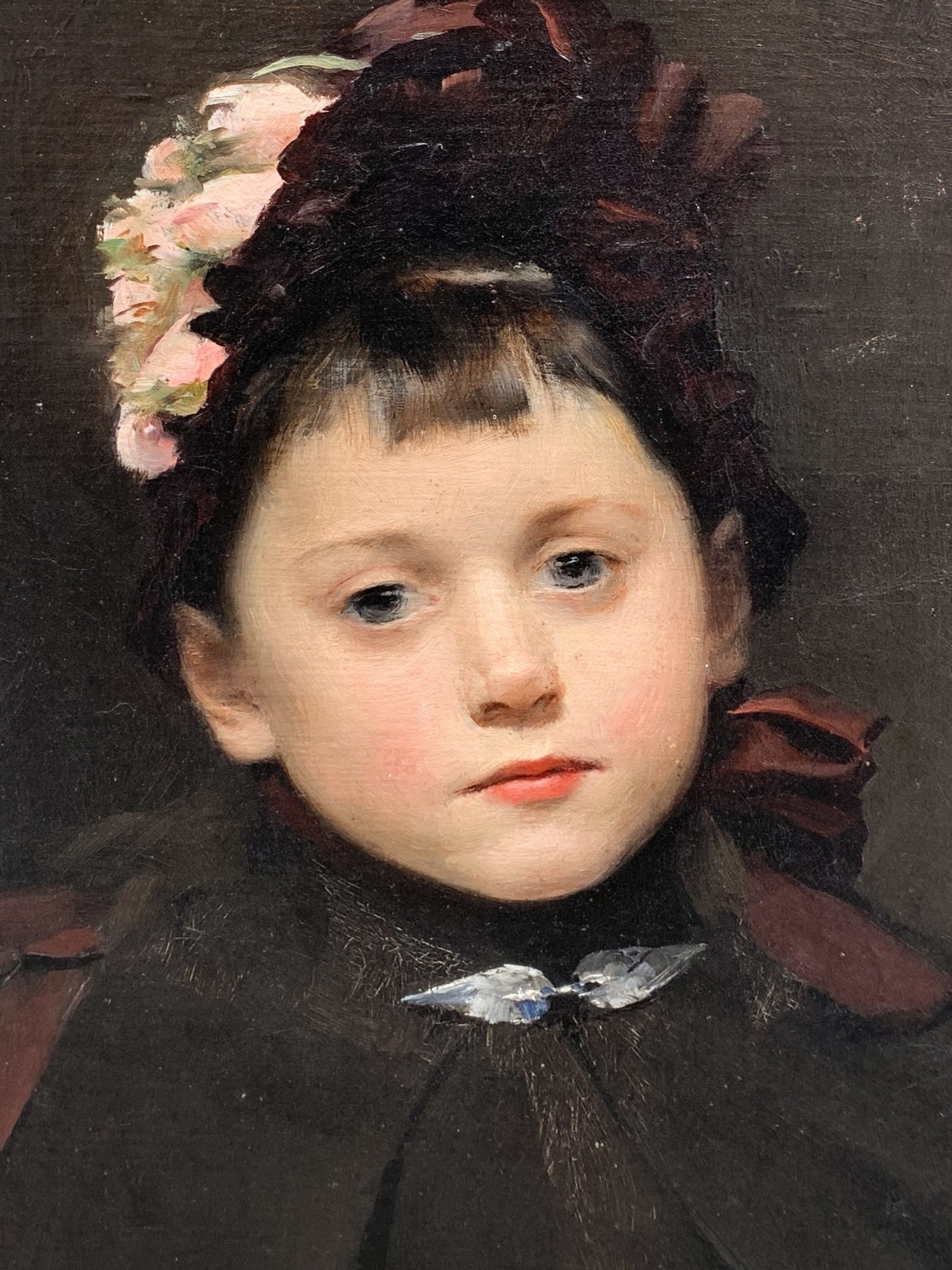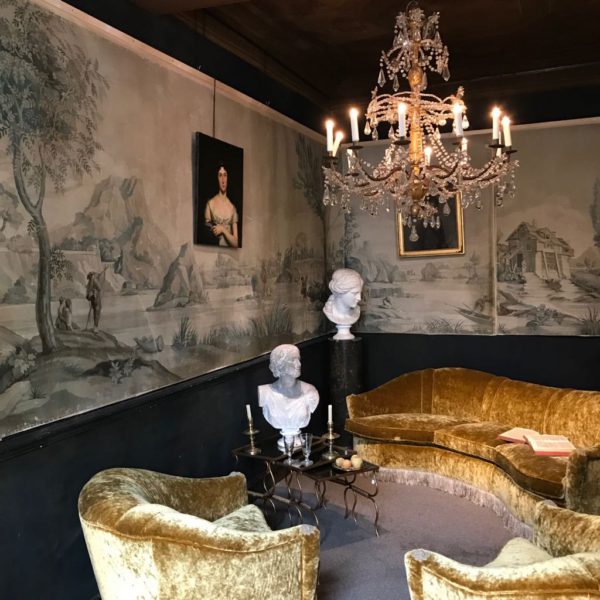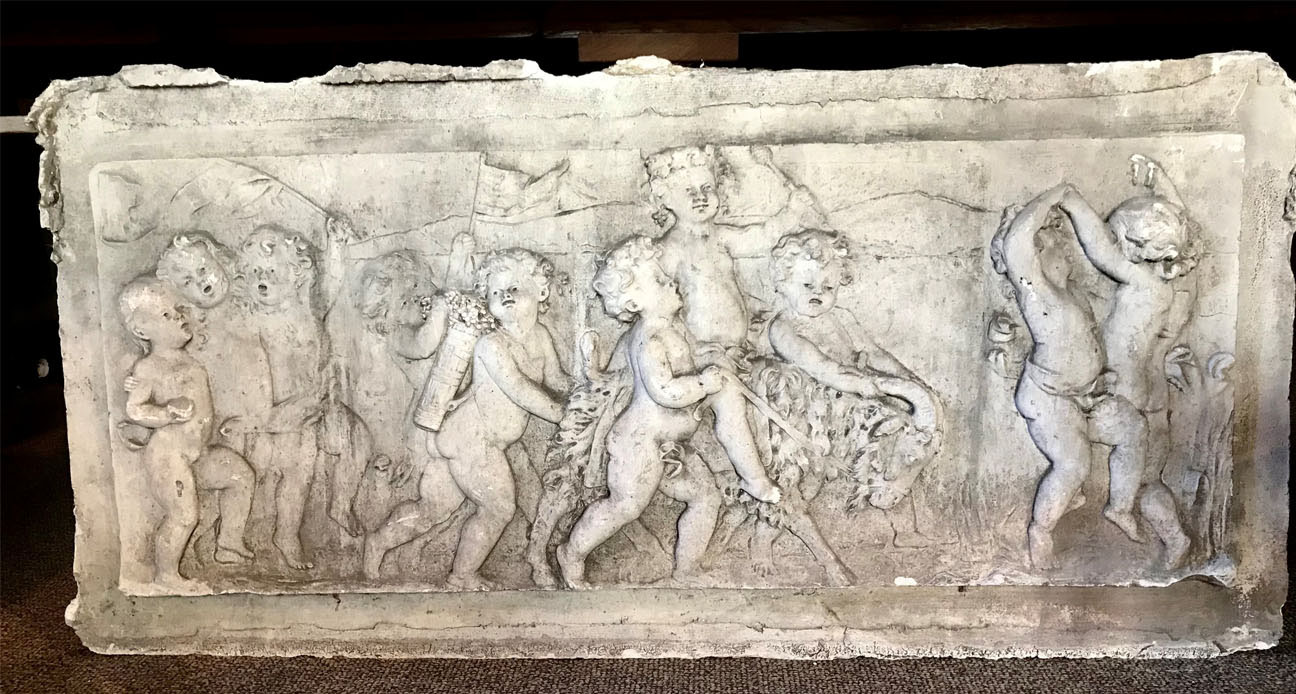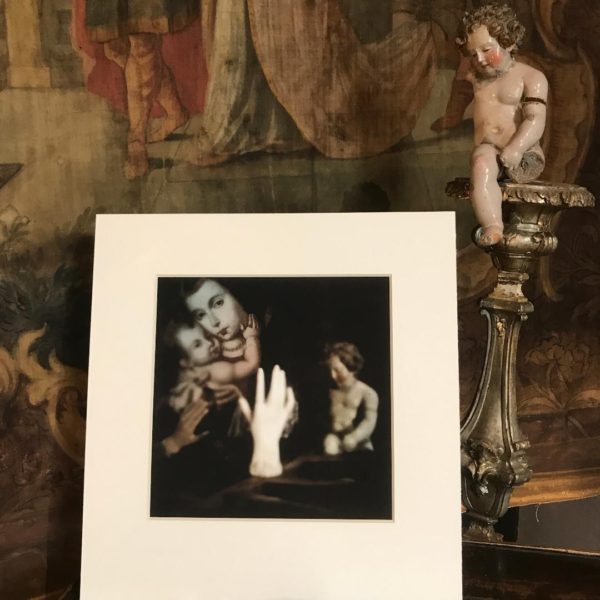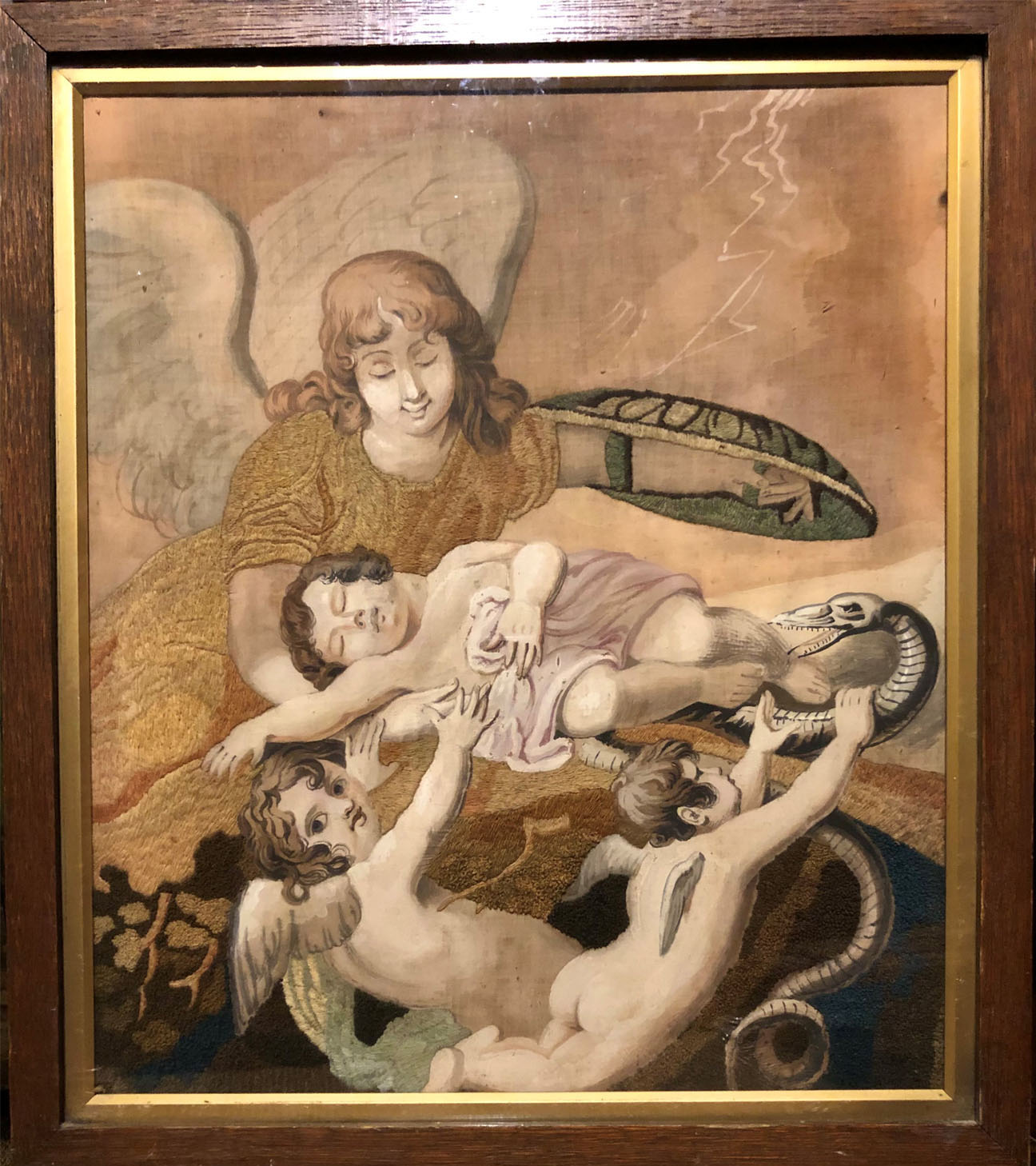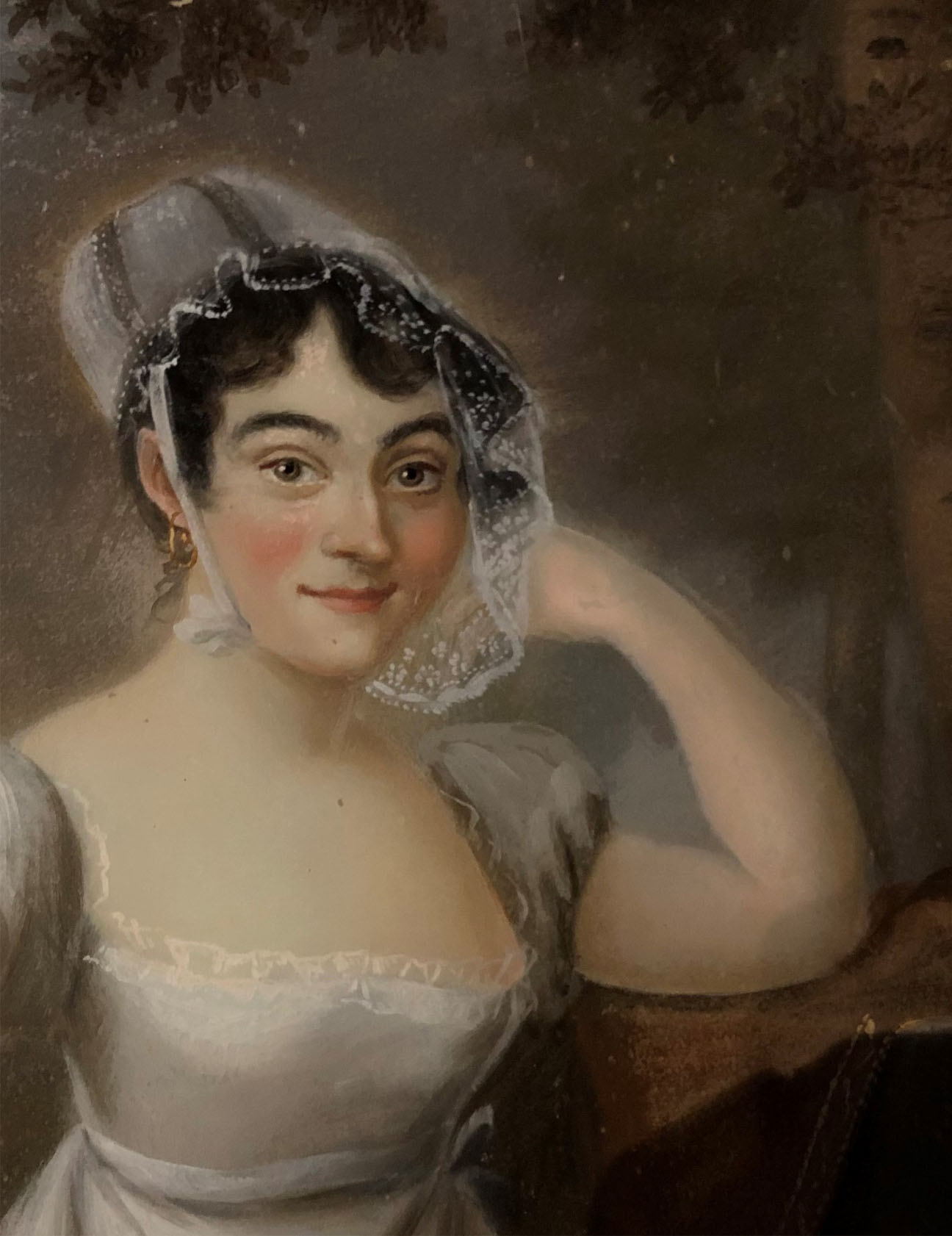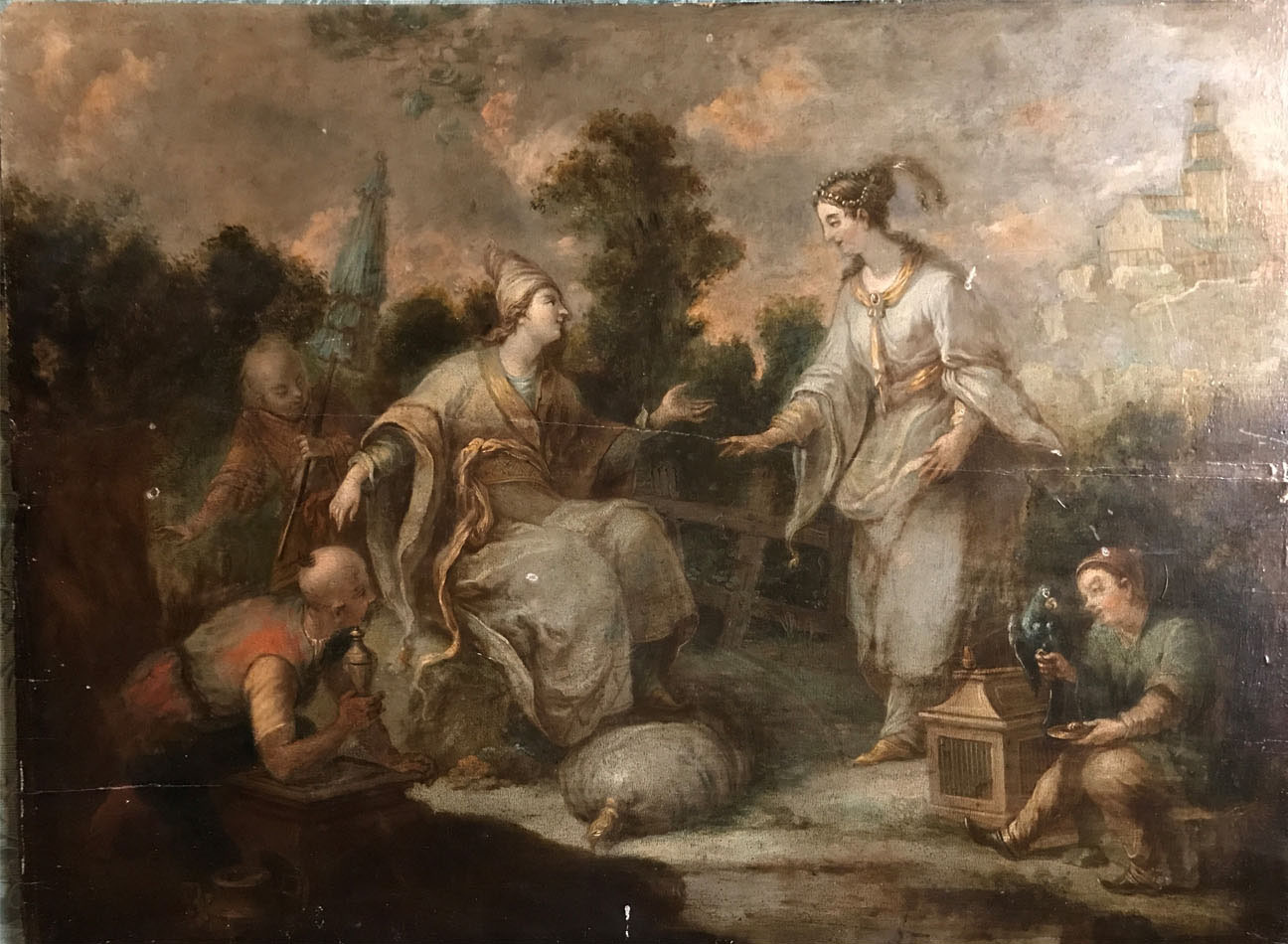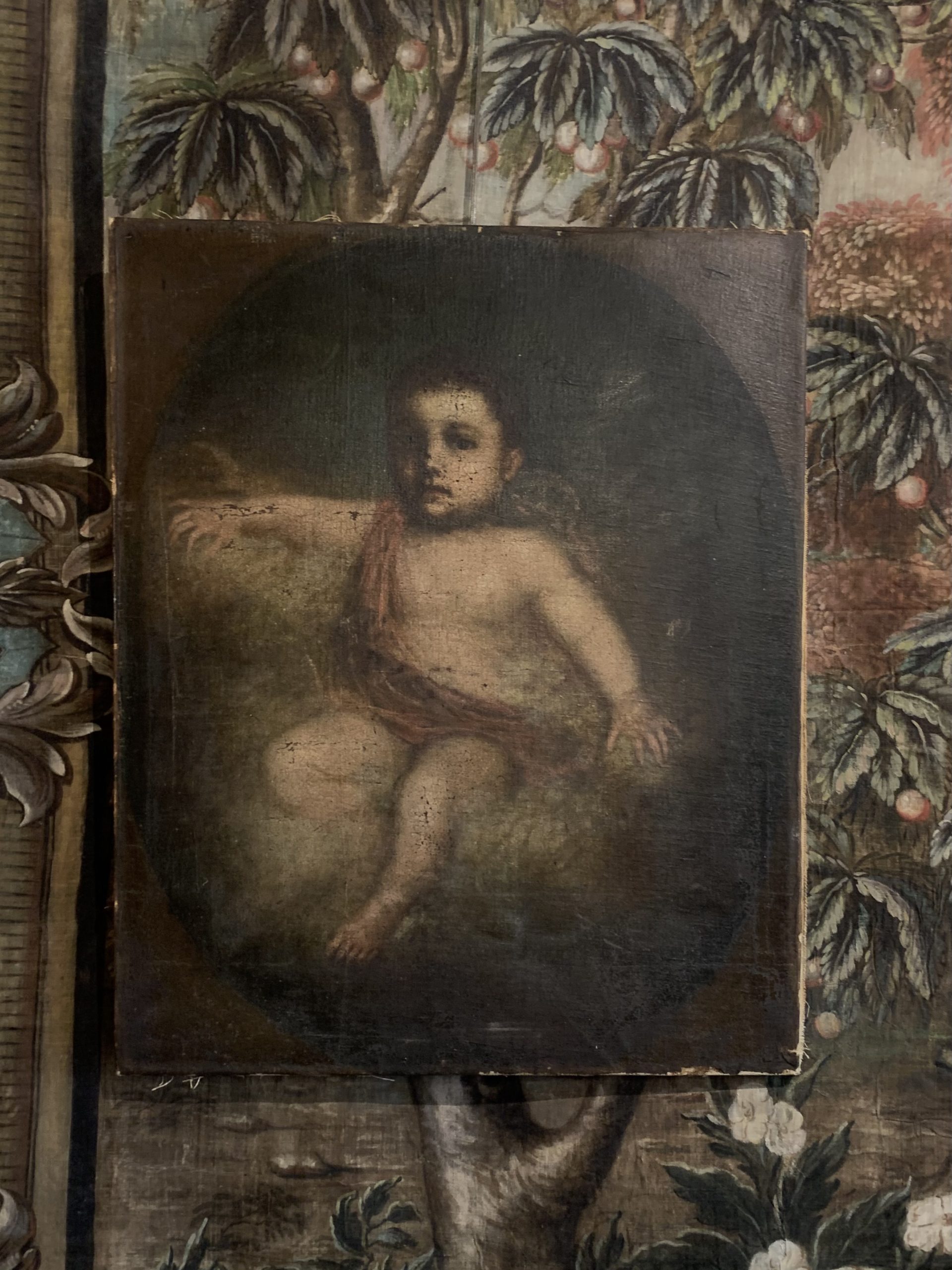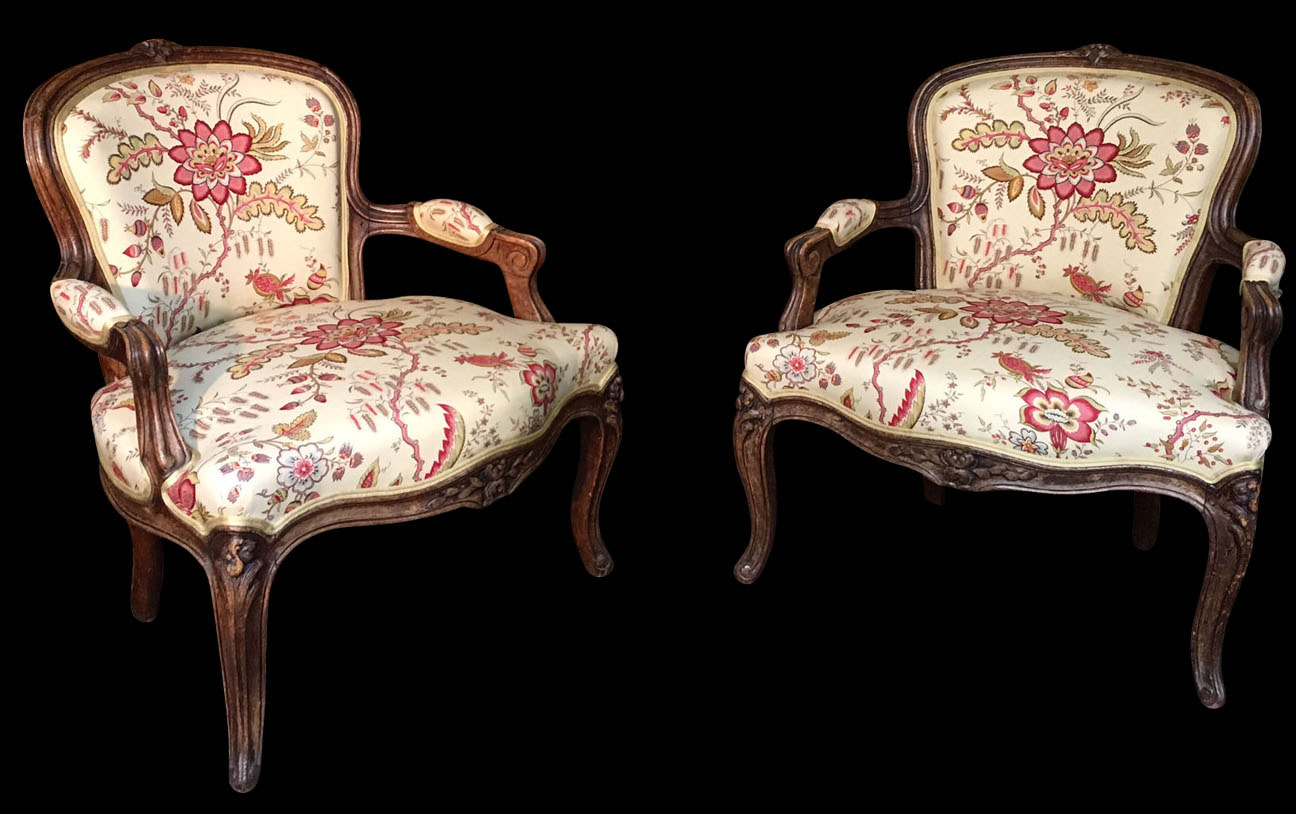Oil on canvas by French painter Jean Hubert Gautier (1872-1930), a little boy dressed in blue, smiling, in 1896.
Signed “Hubert Gautier 96” on the lower right corner.
Gilded wooden frame.
Around 1896
France
Oval portrait of young Louise Guesde, daughter of Jules Guesde (1845-1922), by Spanish painter Fernando Tirado, trained in the Beaux-Arts School of Sevilla, and by painters Cano in Spain and Gérôme in Paris, France. Tirado also exhibited his work in the famous Salon parisien, between 1879 and 1884.
Portrait is signed and dated 1884.
5 panels of painted wallpapers from the first part of the 19th century.
Rural and animated landscape.
Plaster bas relief “Bacchanal”, very cheerful and lively festive atmosphere.
The theme of children with goats is one of the commonplaces in the history of sculpture.
Early 20 th C.
France
Limited prints (3)
signed by Didier Ben Loulou
Silk and embroiddered panel
Regency
England
Fixed under glass of mademoiselle Mars actress and friend of Napoléon.
Anne-Françoise Hippolyte Boutet, known as Miss. Mars (1779-1847) was one of the glories of the French Theater.
Signed Charles Brandt and dates 1810
France
Spanish School
Oil on panel
Traces of signature and date 17 * 9
Oil on canvas
original condition.. damage and marvelous
18th C.
Italy
Small armchairs in the style of the 18th century
Covered with Braquenié fabrics
19th century
France

